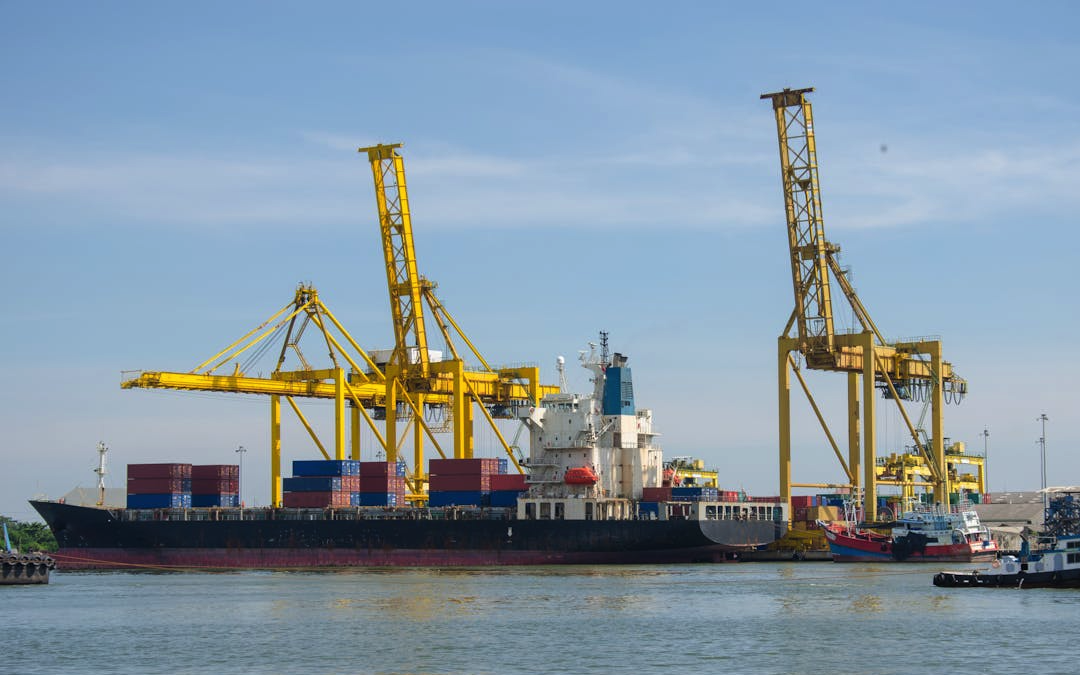
With the continuous advancement of industrial internet technologies, smart ports have gradually become an important trend in the development of the port industry. As a key supporting technology of the industrial internet, artificial intelligence is closely integrated with smart ports, opening a new chapter in port operations and management.
1. Improving Port Operational Efficiency and Safety
Real-time monitoring and management of cargo, vehicles, and personnel can be achieved by deploying smart cameras and sensors in areas such as container terminals and cargo yards, combined with AI-based image recognition and data analysis. The use of intelligent container gantry cranes not only improves cargo handling efficiency and reduces manual inspection costs but also helps detect anomalies in time, ensuring safe port operations.
2. Key Aspects of Smart Port Development
With AI technology, smart ports can achieve intelligent scheduling and optimization of resources such as ships, containers, and yards. Using AI algorithms to optimize the docking of ships and the stacking of containers can reduce operational time, increase port throughput efficiency, and decrease ship waiting times. This, in turn, reduces congestion and collision risks, improving port operational efficiency.
For example, the terminal at Qingdao Port operates at full speed with minimal human involvement. The entire process is managed by just one person, who oversees operations from an office rather than directly on-site. Qingdao Port's terminal is Asia's first fully automated port. Its intelligent system coordinates hundreds of operational factors, integrating planning, scheduling, management, and control. Work plans are automatically generated based on information from ships and containers. Intelligent cranes automatically scan the ship's profile and create optimal work paths, while optical recognition systems receive real-time data from containers. 83 autonomous vehicles transmit location data in real time and dynamically calculate the best route. Laser collision-avoidance and ultrasonic sensor systems ensure safe vehicle operations during container transport.
The full automation process of the terminal took only three years, with all equipment being domestically produced in China. Port managers adopted a policy of manufacturing the equipment locally rather than importing it from abroad. After automation, the port's workforce was reduced from 1,200 to 300 employees. Other terminals in the port currently use semi-automated systems, but they are gradually transitioning to full automation. Port managers have stated that they are implementing this process step by step to avoid disrupting operations.
3. Challenges and Opportunities
With the ongoing development of AI, big data, the Internet of Things (IoT), and other technologies, smart ports will encounter more application scenarios and innovative models. For example, AI-based smart forecasting and shipyard gantry cranes will further enhance the intelligence level of port operations. The application of smart ships, Shipyard Gantry Cranes, and autonomous driving technology will also bring new transformations to port transportation. However, smart ports also face challenges such as data security, unified technical standards, and talent development, which require joint efforts from all stakeholders in the industry.
The integration of AI with smart ports will have a profound impact on the development of smart ports. Through the continuous application and deep integration of AI technology, smart ports can achieve intelligent, automated, and refined management of port operations, thereby improving operational efficiency and service levels.
Conclusion
The combination of AI and smart ports plays a significant role in the development of smart ports. By integrating AI technology deeply into port operations, smart ports can achieve intelligent, automated, and refined management, enhancing operational efficiency and service quality.
Platforms like Fuli Cloud utilize cutting-edge information technology and IoT to drive the digital, intelligent, and efficient management of ports. In the construction of smart port systems, digital twin technology plays an important role in the field of industrial internet.
Share this post
Leave a comment
All comments are moderated. Spammy and bot submitted comments are deleted. Please submit the comments that are helpful to others, and we'll approve your comments. A comment that includes outbound link will only be approved if the content is relevant to the topic, and has some value to our readers.

Comments (0)
No comment